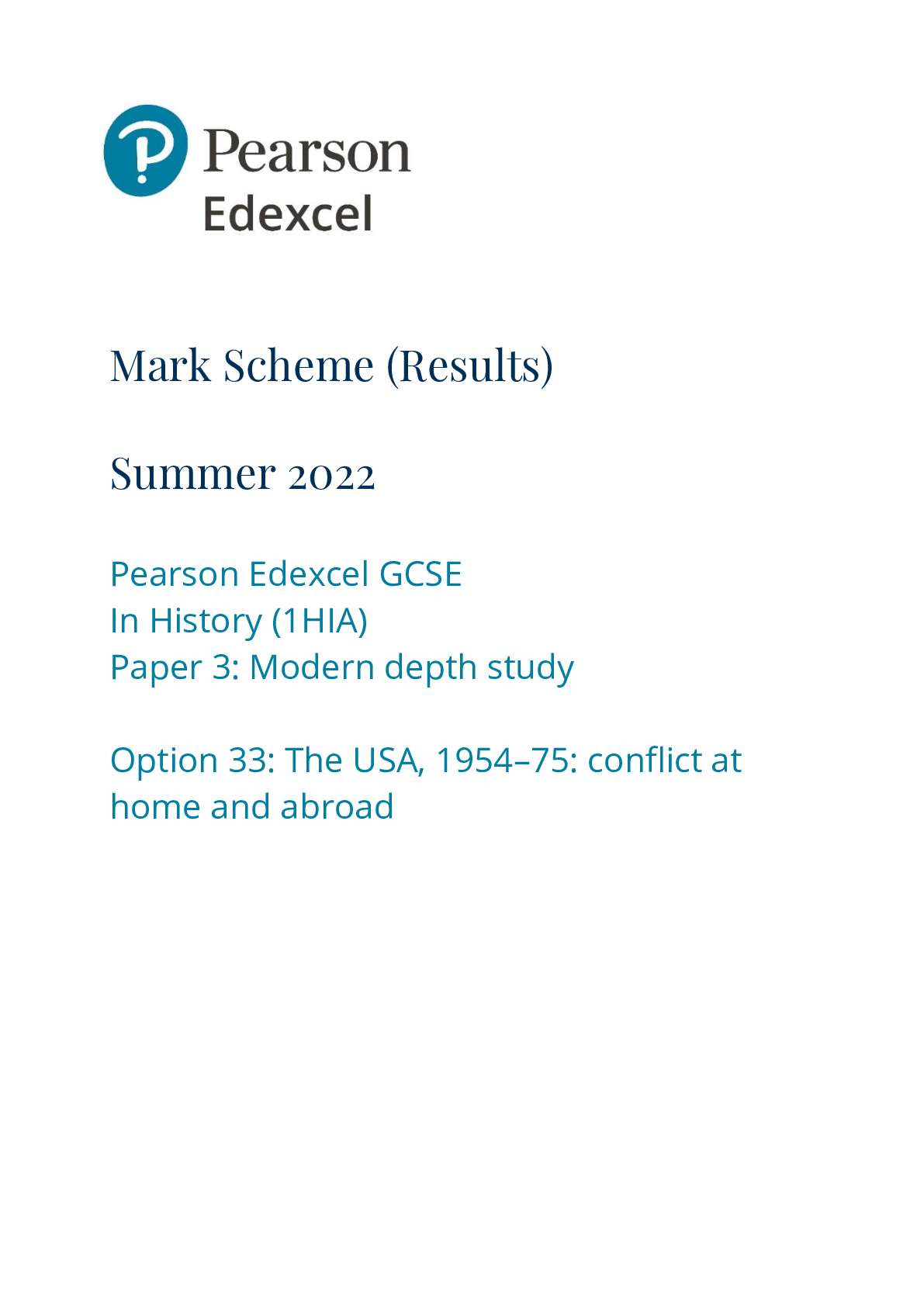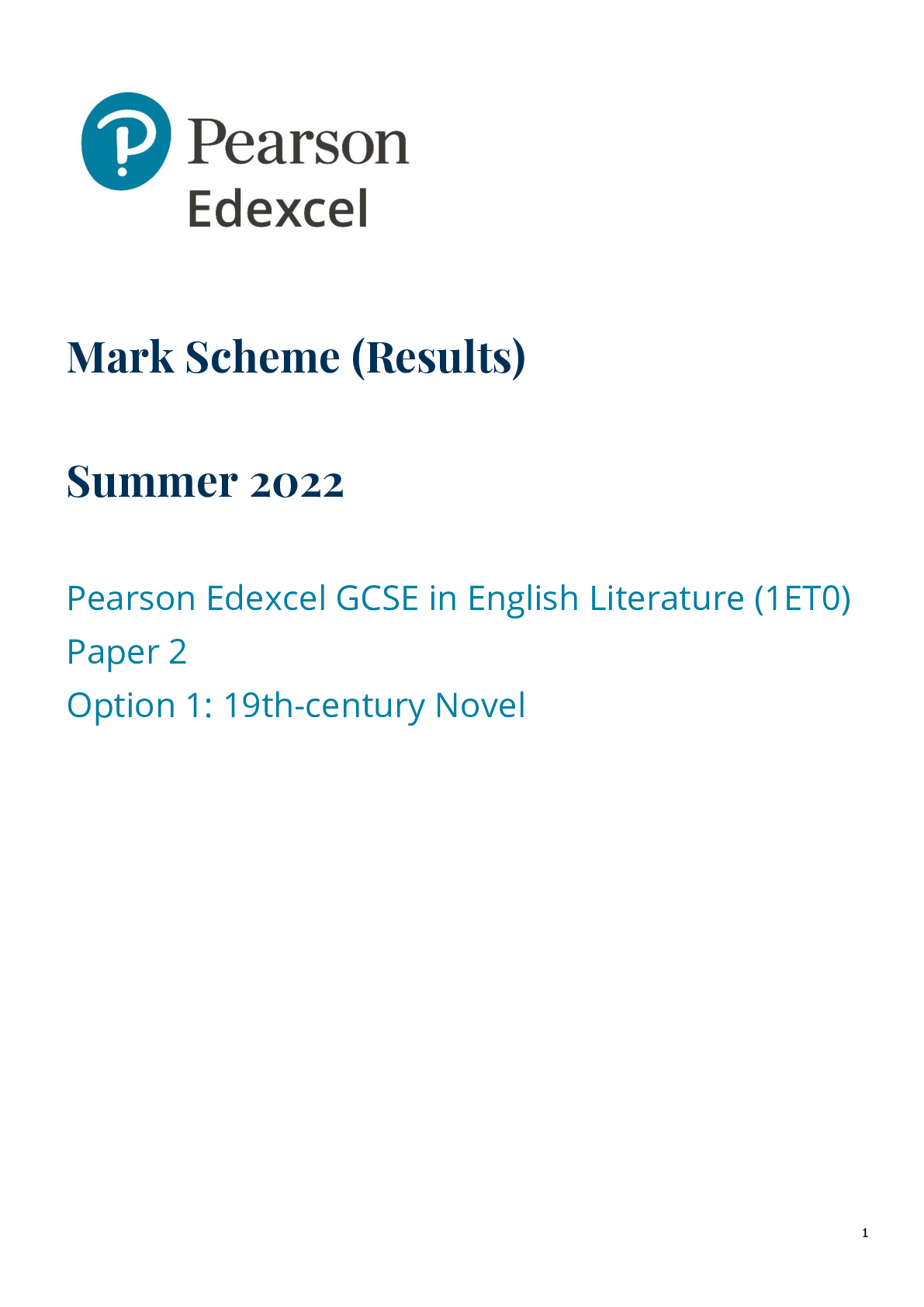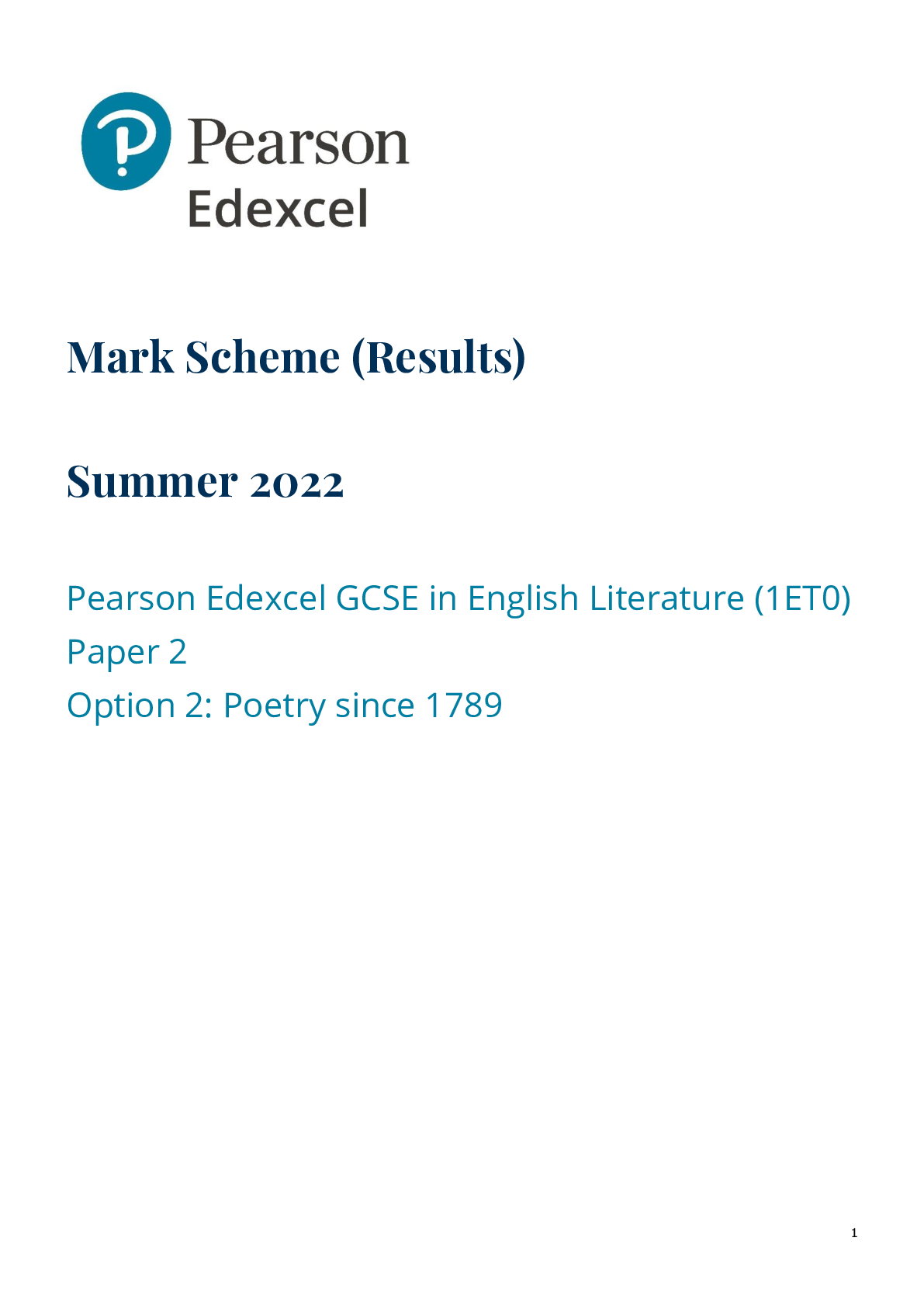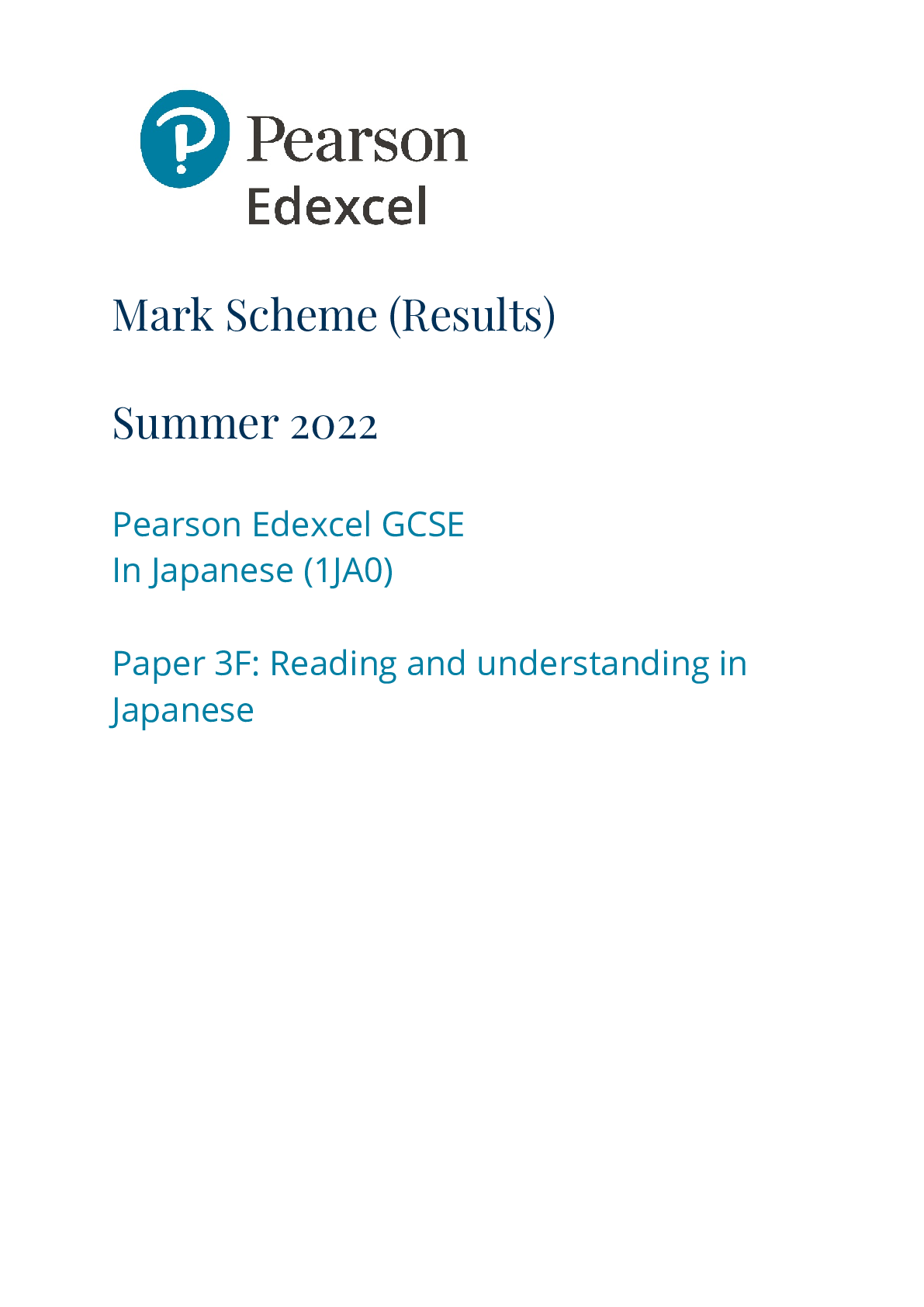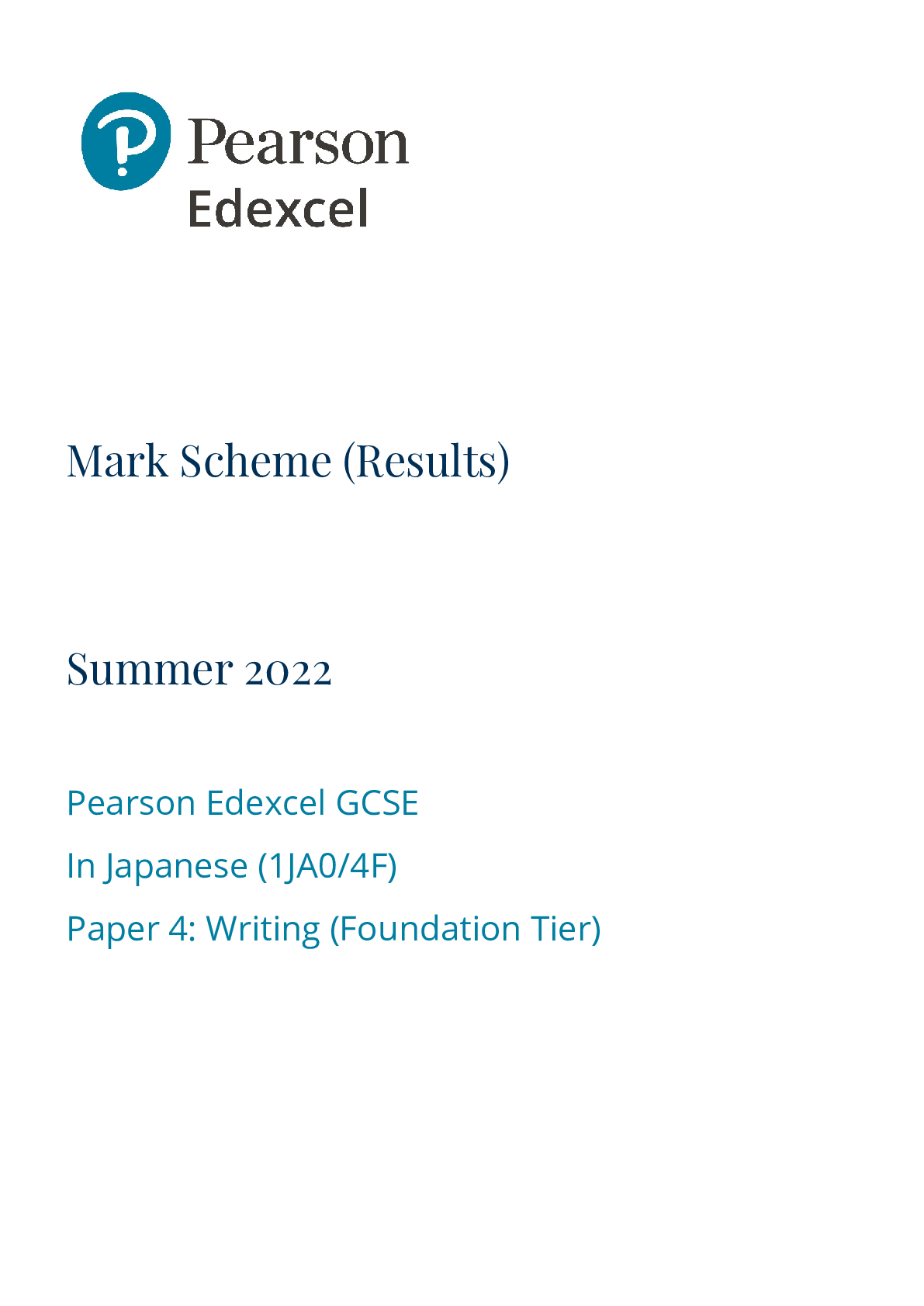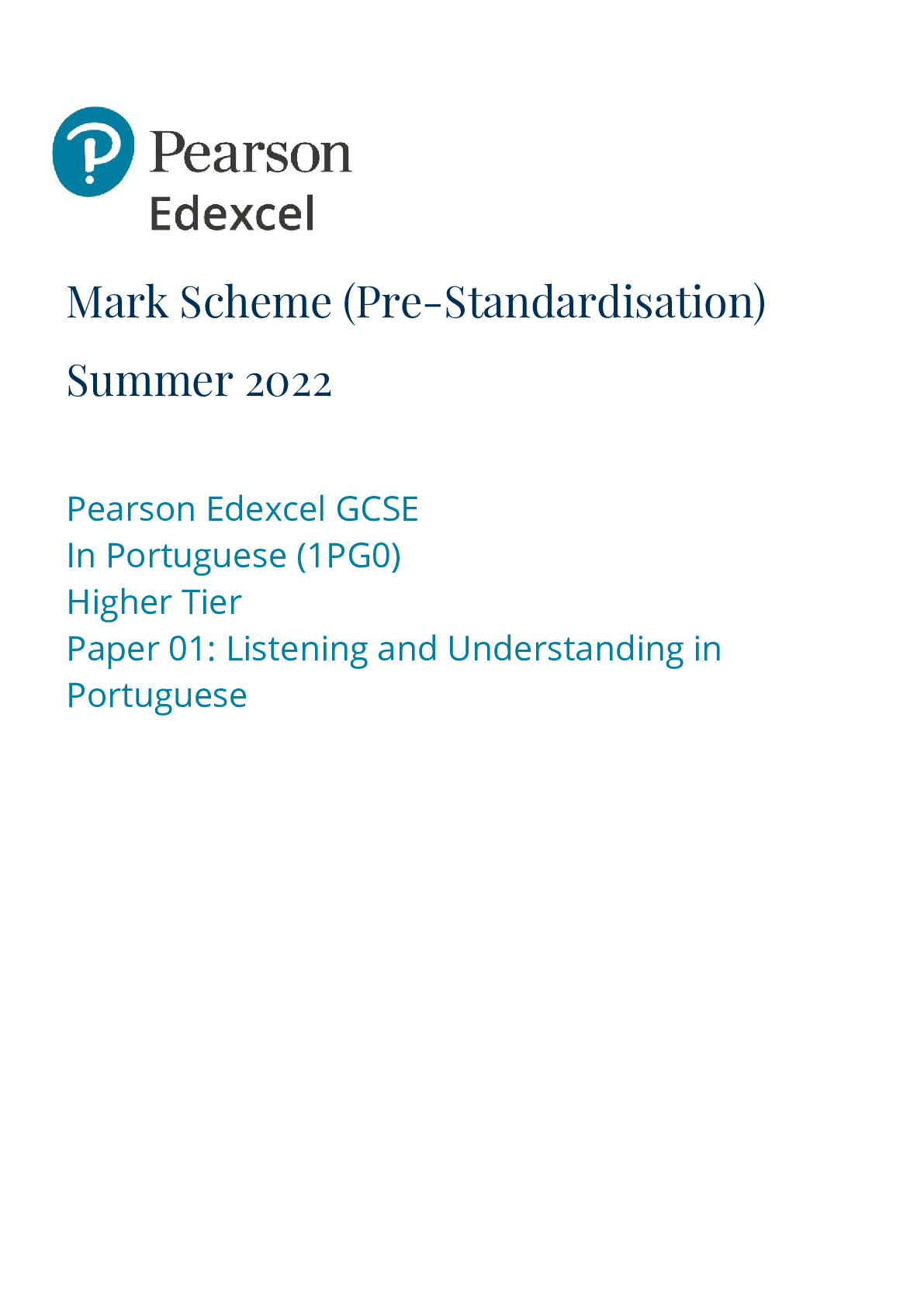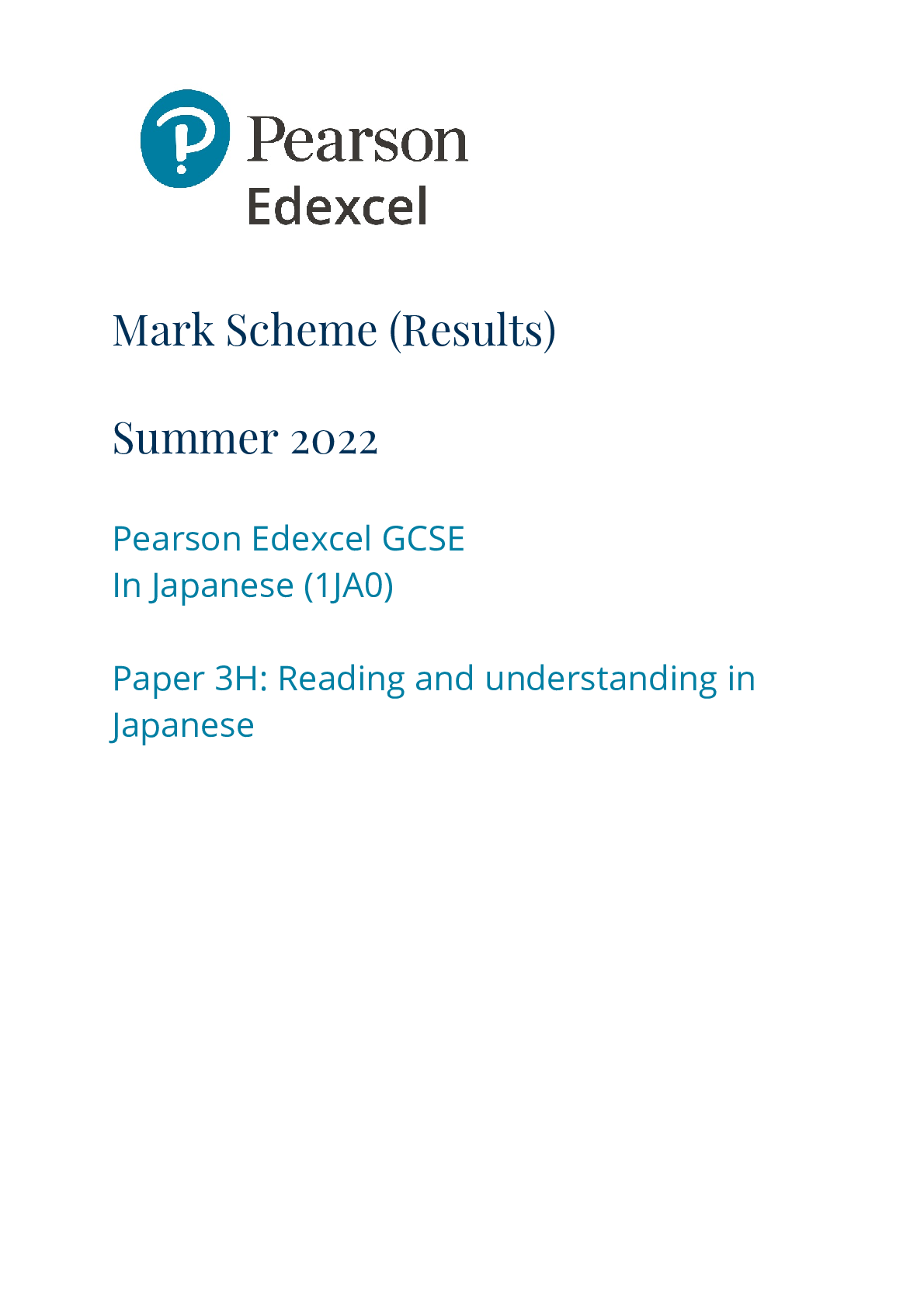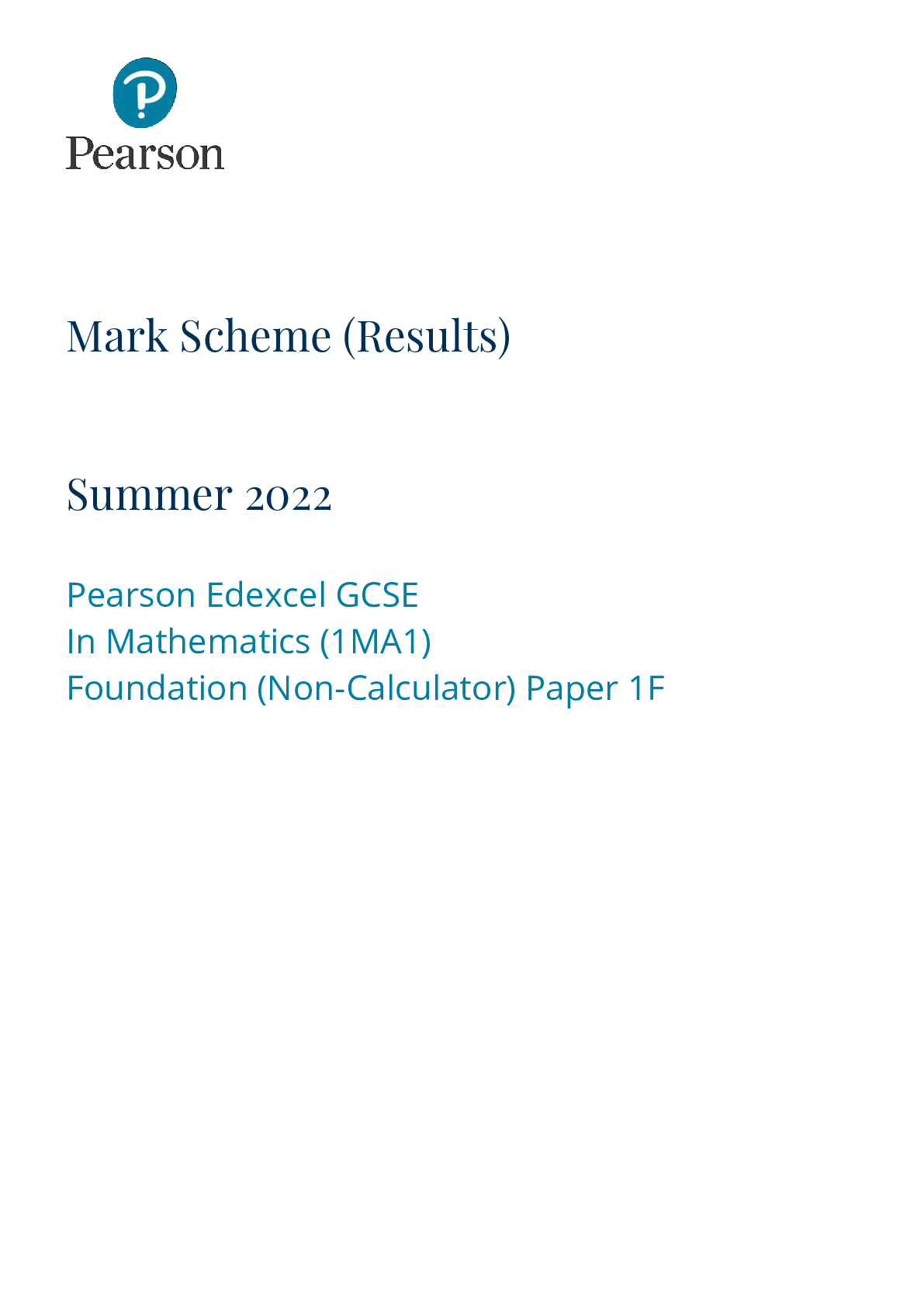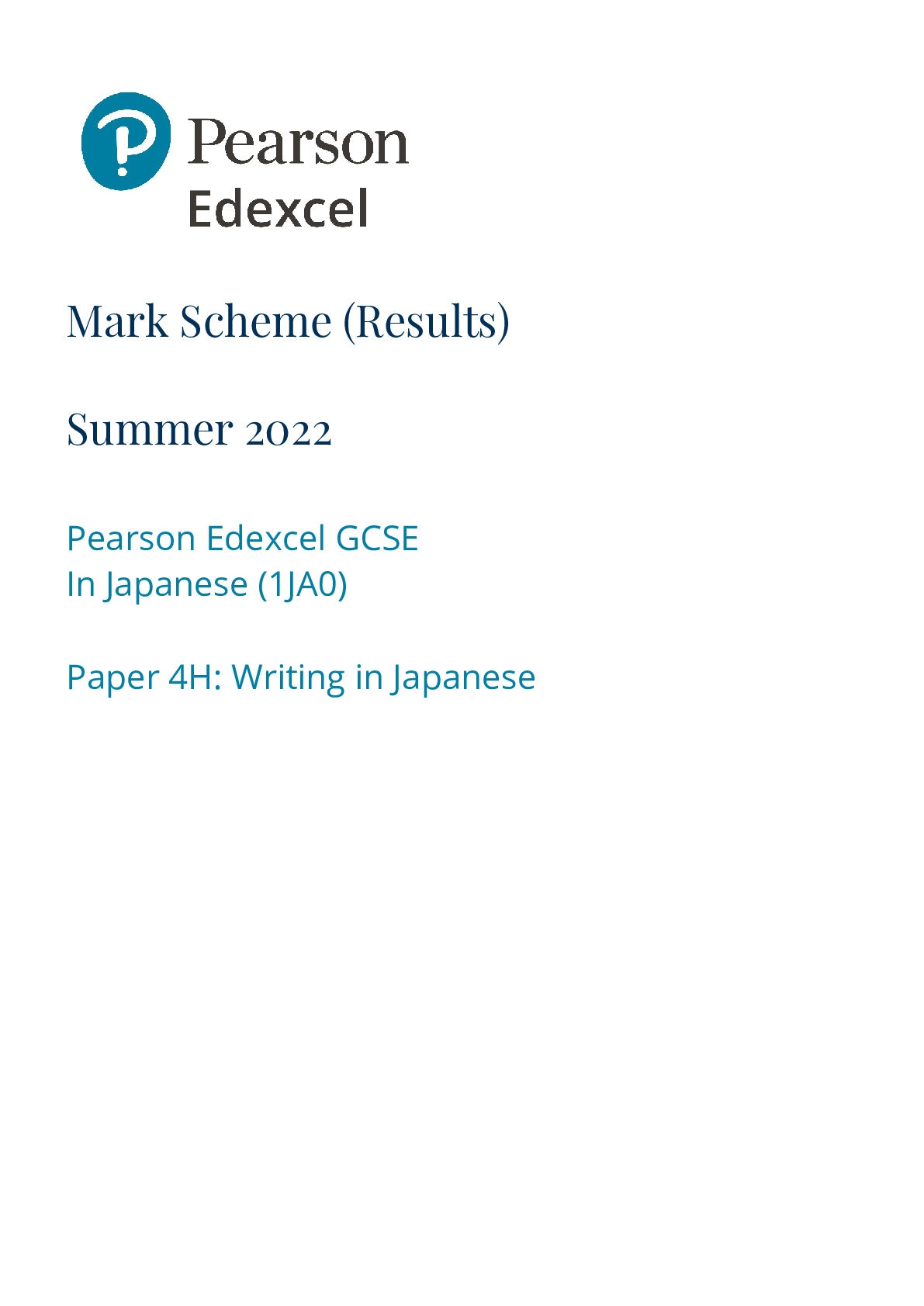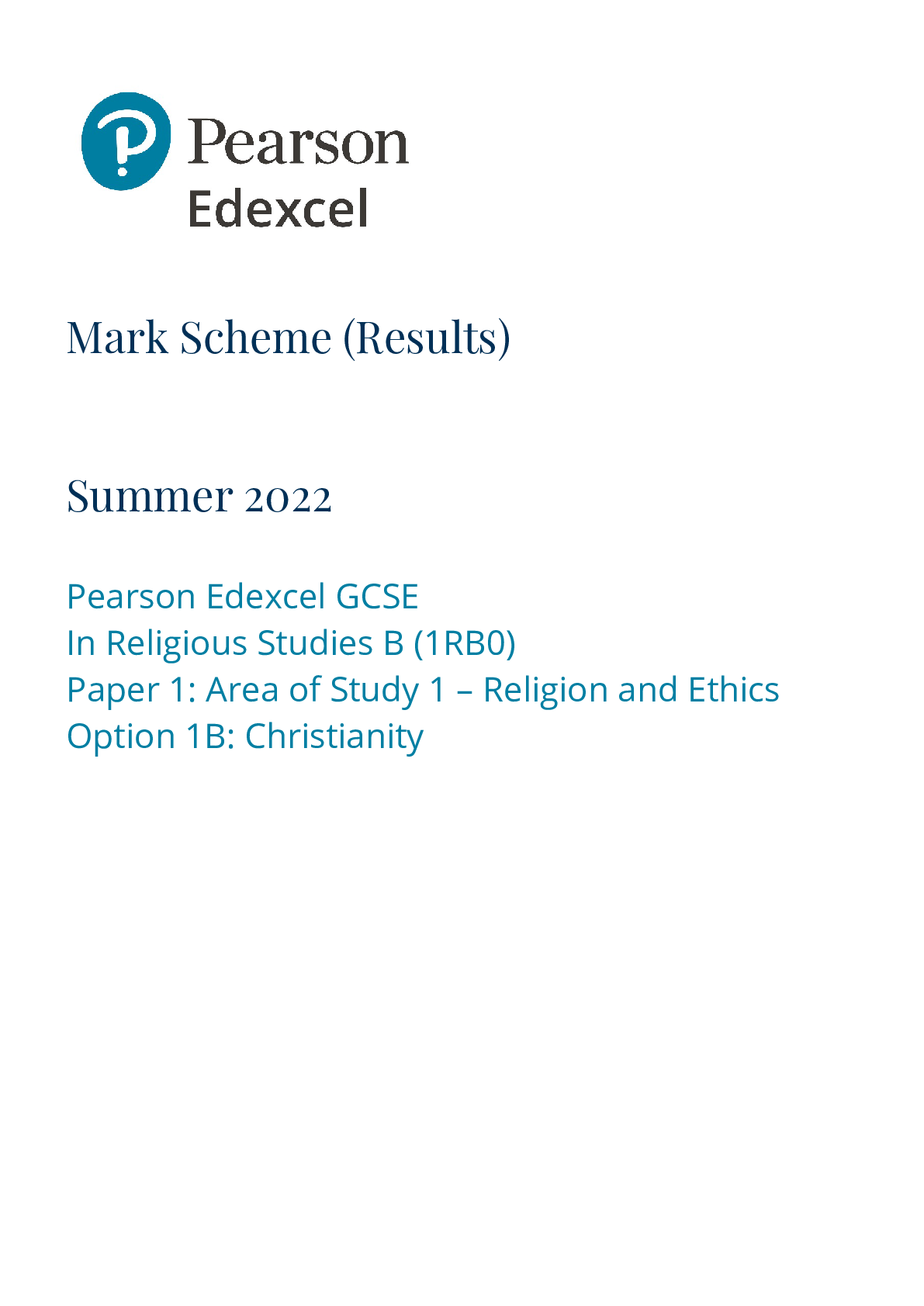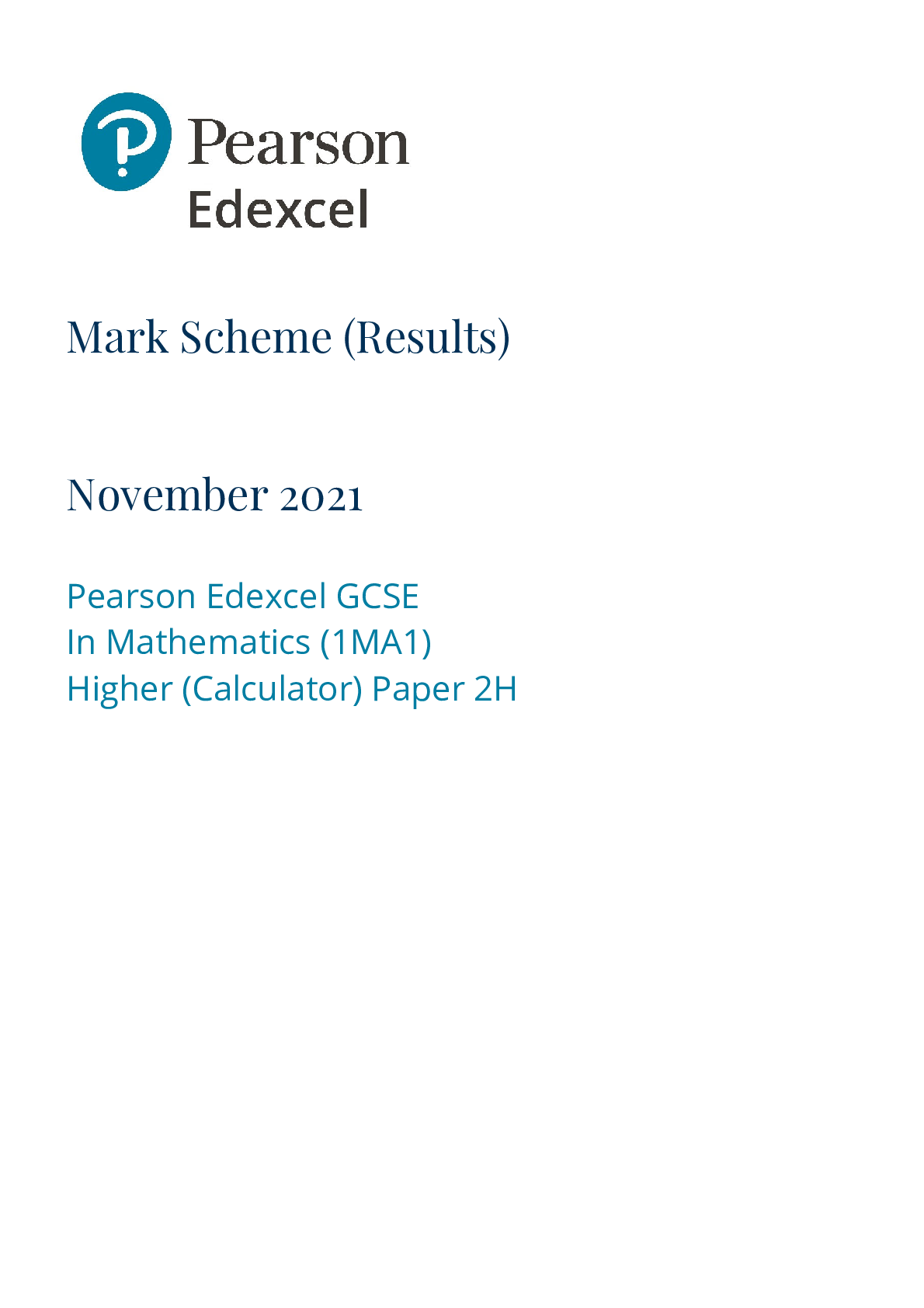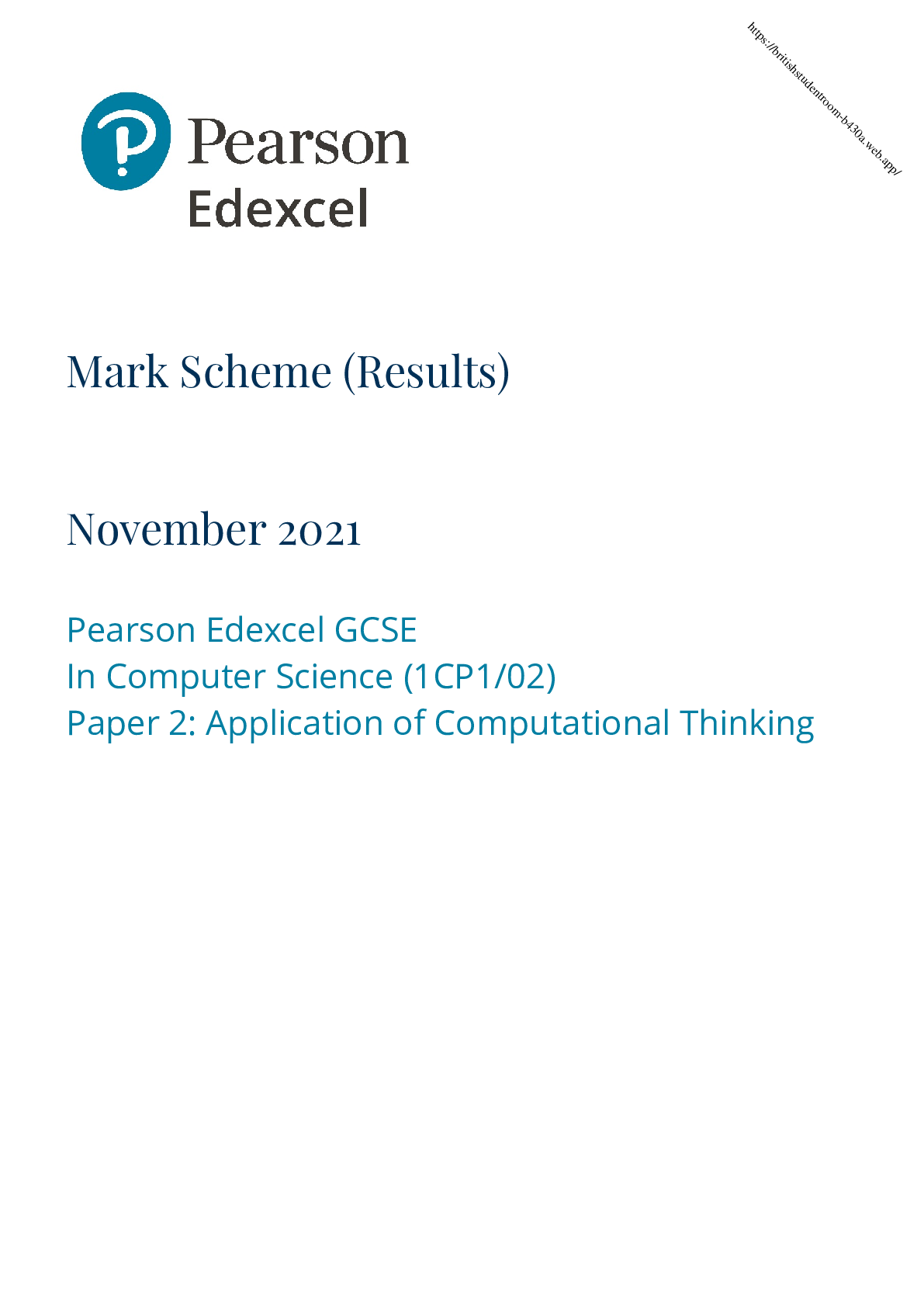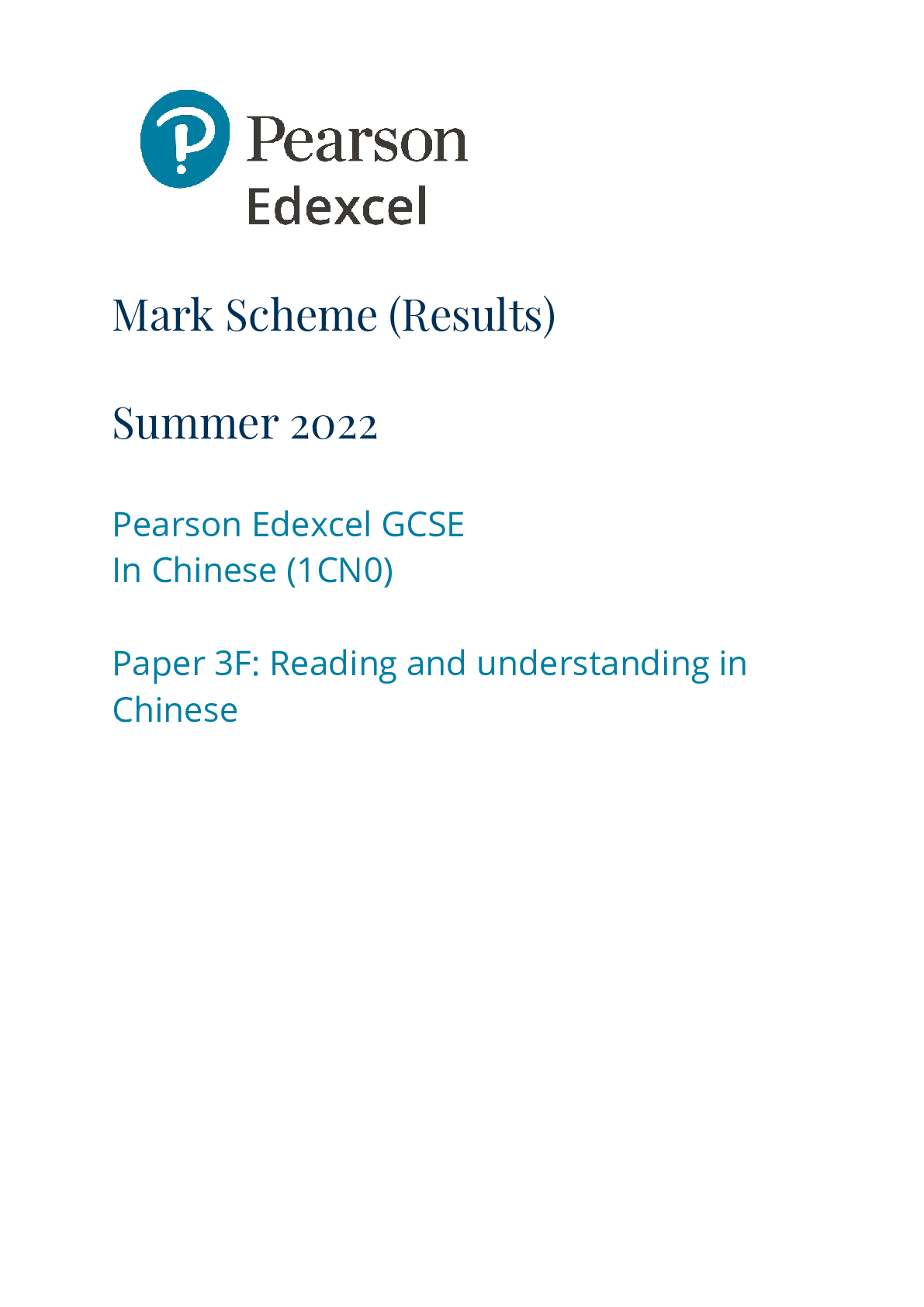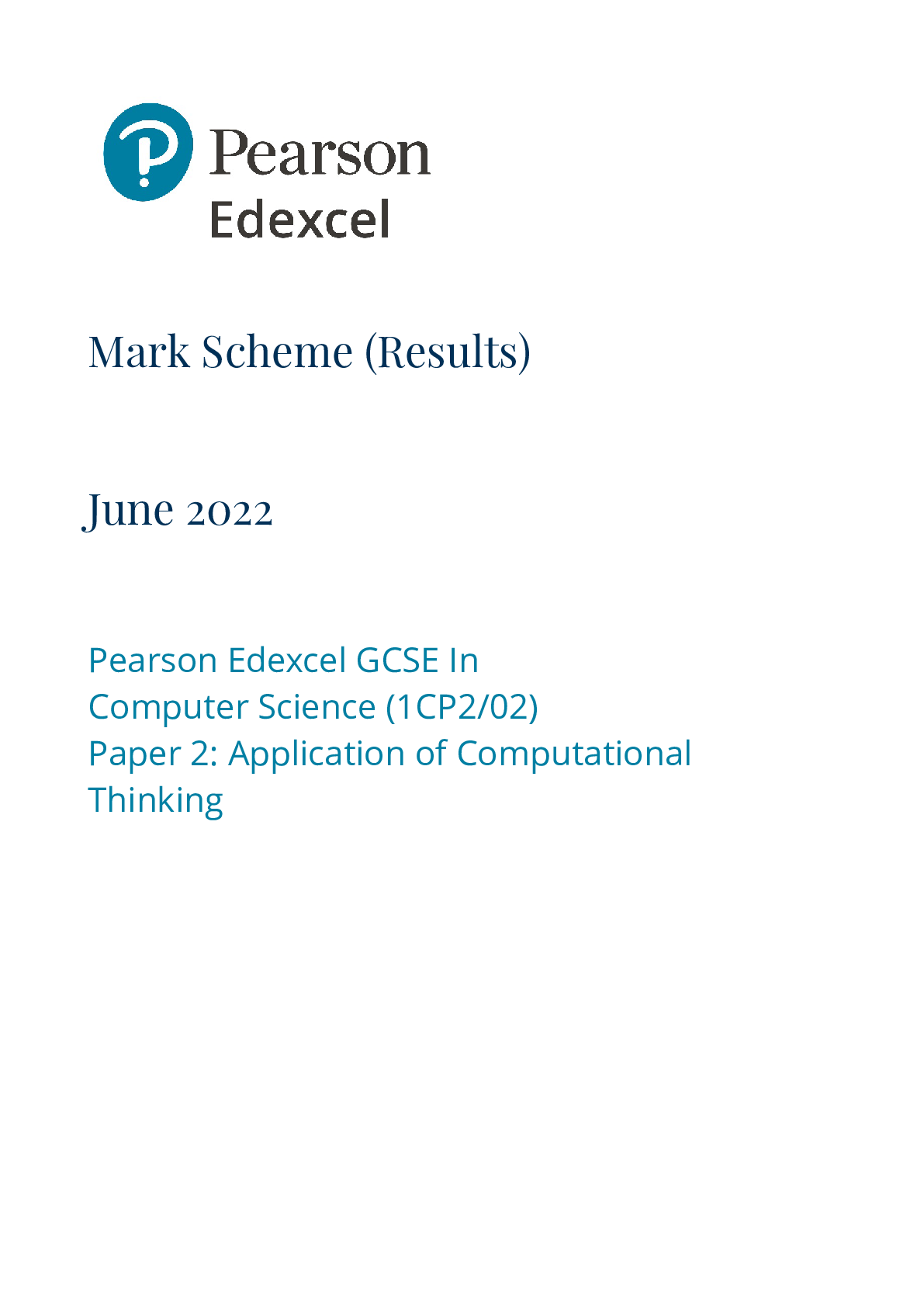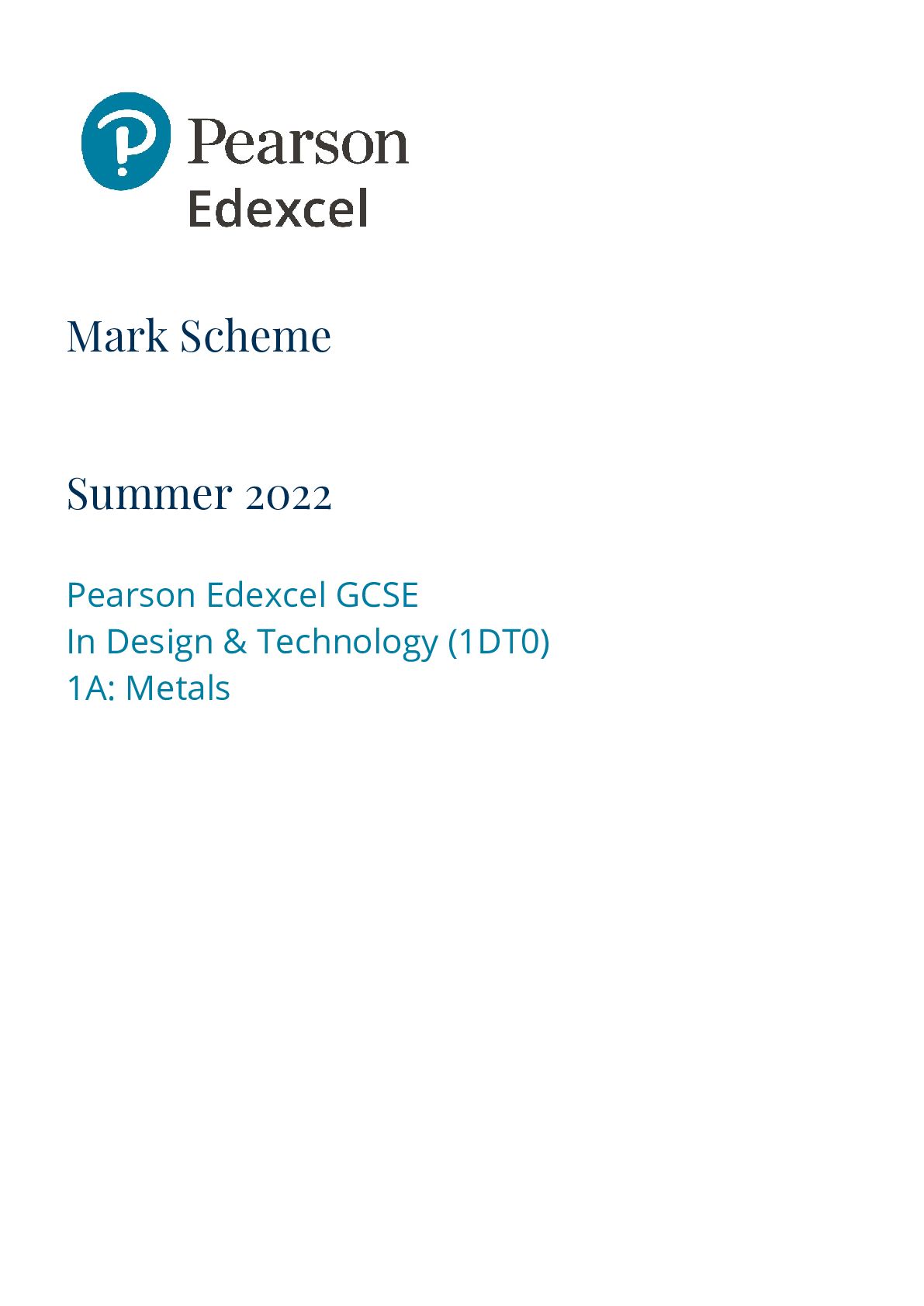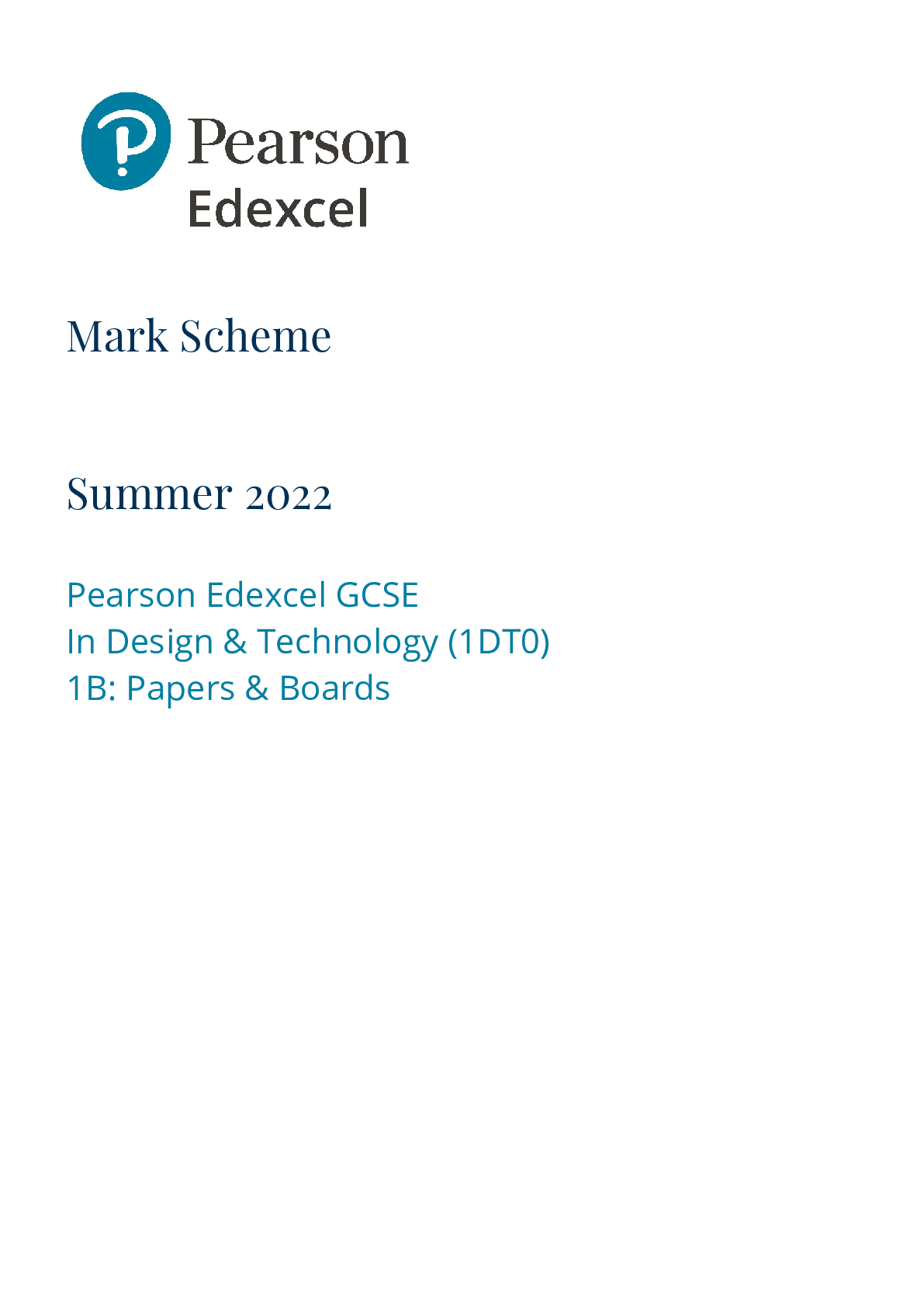Italian > MARK SCHEME > Mark Scheme (Results) Summer 2o22 Pearson Edexcel GCSE In Italian (1IN0) Paper 4H: Writing in Italia (All)
Mark Scheme (Results) Summer 2o22 Pearson Edexcel GCSE In Italian (1IN0) Paper 4H: Writing in Italian Edexcel and BTEC Qualifications
Document Content and Description Below
Mark Scheme (Results) Summer 2o22 Pearson Edexcel GCSE In Italian (1IN0) Paper 4H: Writing in Italian Edexcel and BTEC Qualifications Edexcel and BTEC qualifications are awarded by Pearson, the ... UK’s largest awarding body. We provide a wide range of qualifications including academic, vocational, occupational and specific programmes for employers. For further information visit our qualifications websites at www.edexcel.com or www.btec.co.uk. Alternatively, you can get in touch with us using the details on our contact us page at www.edexcel.com/contactus. Pearson: helping people progress, everywhere Pearson aspires to be the world’s leading learning company. Our aim is to help everyone progress in their lives through education. We believe in every kind of learning, for all kinds of people, wherever they are in the world. We’ve been involved in education for over 150 years, and by working across 70 countries, in 100 languages, we have built an international reputation for our commitment to high standards and raising achievement through innovation in education. Find out more about how we can help you and your students at: www.pearson.com/uk Summer 2022 Question Paper Log Number P72366 Publications Code 1IN0_4H_MS_2022 All the material in this publication is copyright © Pearson Education Ltd 2022 General Marking Guidance • All candidates must receive the same treatment. Examiners must mark the first candidate in exactly the same way as they mark the last. • Mark schemes should be applied positively. Candidates must be rewarded for what they have shown they can do rather than penalised for omissions. • Examiners should mark according to the mark scheme not according to their perception of where the grade boundaries may lie. • There is no ceiling on achievement. All marks on the mark scheme should be used appropriately. • All the marks on the mark scheme are designed to be awarded. Examiners should always award full marks if deserved, i.e. if the answer matches the mark scheme. Examiners should also be prepared to award zero marks if the candidate’s response is not worthy of credit according to the mark scheme. • Where some judgement is required, mark schemes will provide the principles by which marks will be awarded and exemplification may be limited. • When examiners are in doubt regarding the application of the mark scheme to a candidate’s response, the team leader must be consulted. • Crossed out work should be marked UNLESS the candidate has replaced it with an alternative response. Pearson Education Limited. Registered company number 872828 with its registered office at 80 Strand, London, WC2R 0RL, United Kingdom Italian GCSE Higher tier Paper 4 – Mark scheme Marking guidance This marking guidance is for the use of Pearson-appointed external examiners. The guidance has been included for teacher reference to aid understanding of how the assessment criteria are applied. General guidance on using levels-based mark schemes Step 1 Decide on a band • Examiners should first of all consider the answer as a whole and then decide which descriptors most closely match the answer and place it in that band. The descriptors for each band indicate the different features that might be seen in the student’s answer for that band. • When assigning a level you should look at the overall quality of the answer and not focus disproportionately on small and specific parts of the answer where the student has not performed quite as well as the rest. If the answer covers different aspects of different bands of the mark scheme you should use a ‘best fit’ approach for defining the level and then use the variability of the response to help decide the mark within the level, for example if the response is predominantly band 5–8 with a small amount of band 9–12 material, it would be placed in band 5–8 but be awarded a mark near the top of the band because of the band 9–12 content. Step 2 Decide on a mark • Once you have decided on a band you will then need to decide on a mark within the band. • You will decide on the mark to award based on the quality of the answer; you will award a mark towards the top or bottom of that band depending on how students have evidenced each of the descriptor bullet points. • You will modify the mark based on how securely the bullet point descriptors are met at that band. • You will need to go back through the answer as you apply the mark scheme to clarify points and assure yourself that the band and the mark are appropriate. • Please note that the number of bullet points in the band descriptor does not directly correlate to the number of marks in the band descriptor. Assessment criteria for the higher tier Question 1 – Higher tier (20 marks) For this question, students’ work is marked by Pearson using assessment criteria given in two mark grids: • communication and content • linguistic knowledge and accuracy. This question contains four compulsory bullet points that form part of the task. Although there may be uneven coverage of the bullet points, as long as students refer to all bullet points in their response they can potentially access full marks provided they meet the other criteria within the band. This question requires students to write in an informal style (see Additional guidance below). The student is expected to produce 80–90 words for this task. The number of words is approximate and students will not be penalised for writing more or fewer words than recommended in the word count. All work produced by the student must be marked. Question 1: communication and content mark grid – Higher tier Mark Descriptor 0 No rewardable material 1–3 • Communicates brief information relevant to the task with little development • Uses straightforward language to narrate, inform and interest; straightforward personal opinions are given with limited justification • Expresses straightforward thoughts and ideas; uses common, familiar language with repetition • Variable use of appropriate register and style 4–6 • Communicates information relevant to the task, with development of the occasional key point and idea • Effective adaptation of straightforward language to narrate and inform; attempts are made to interest and give convincing personal opinions which are occasionally successful • Expresses mainly straightforward thoughts and ideas with the occasional individual thought/idea; some different examples of common, familiar language • Appropriate use of register and style is evident but with inconsistencies 7–9 • Communicates information relevant to the task, with development of some key points and ideas • Mostly effective adaptation of language to narrate and inform, some effective language to interest and give convincing personal opinions • Some examples of creative language use to express individual thoughts and ideas; a variety of mainly common, familiar language with the occasional example of uncommon language • Appropriate use of register and style is evident but with occasional inconsistency 10–12 • Communicates information relevant to the task with expansion of key points and ideas • Effective adaptation of language to narrate, inform, interest and give convincing personal opinions • Frequent examples of creative language use to express individual thoughts and ideas; a variety of vocabulary and expression, some examples of uncommon language • Appropriate use of register and style throughout, with minimal inconsistency Additional guidance Creative language use: examples of creative language use are: • using language to create an effect • using language, including familiar, high frequency and simple language, to respond to unfamiliar/unexpected contexts and purposes • using language to express thoughts, ideas, feelings and emotions • using language to inform and narrate ideas, thoughts and points of view to maintain interest • applying a variety of vocabulary and structures to maintain interest • using language effectively to achieve more complex purposes, for example to interest, to convince. Individual thoughts, ideas and opinions: this is linked to creative use of language whereby students use language to express original thoughts, ideas and points of view that go beyond the minimum/standard/predictable response. Register and style Informal register and style: examples of informal style include colloquial, conversational language that students would use with friends. It also requires use of the informal structure when using, for example, verbs and possessive adjectives. Adaptation of language to narrate, inform, interest and give convincing opinions: adapts language to achieve different purposes in the language; students may adapt language more effectively for one purpose than another, for example they may use language effectively to narrate but less effectively to interest or give a convincing opinion. Question 1: linguistic knowledge and accuracy mark grid – Higher tier Mark Descriptor 0 No rewardable material 1–2 • Uses straightforward grammatical structures, much repetition • Produces brief, simple sentences, limited linking of sentences • Some accurate phrases and sentences evident, inconsistent success when referring to present, future and past events, regular ambiguity; errors often prevent meaning being conveyed 3–4 • Uses mostly straightforward grammatical structures, some repetition • Produces occasionally extended sentences linked with familiar, straightforward conjunctions • Some accurate language and structures, including some successful references to present events; less successful when referring to future or past events where there is some ambiguity; errors occur that often hinder clarity of communication and occasionally prevent meaning being conveyed 5–6 • Different examples of straightforward grammatical structures are evident • Produces some extended sentences that are linked with familiar, straightforward conjunctions • Frequently accurate language and structures, including successful references to present events; occasional ambiguity when referring to future or past events where there is so [Show More]
Last updated: 1 year ago
Preview 1 out of 17 pages
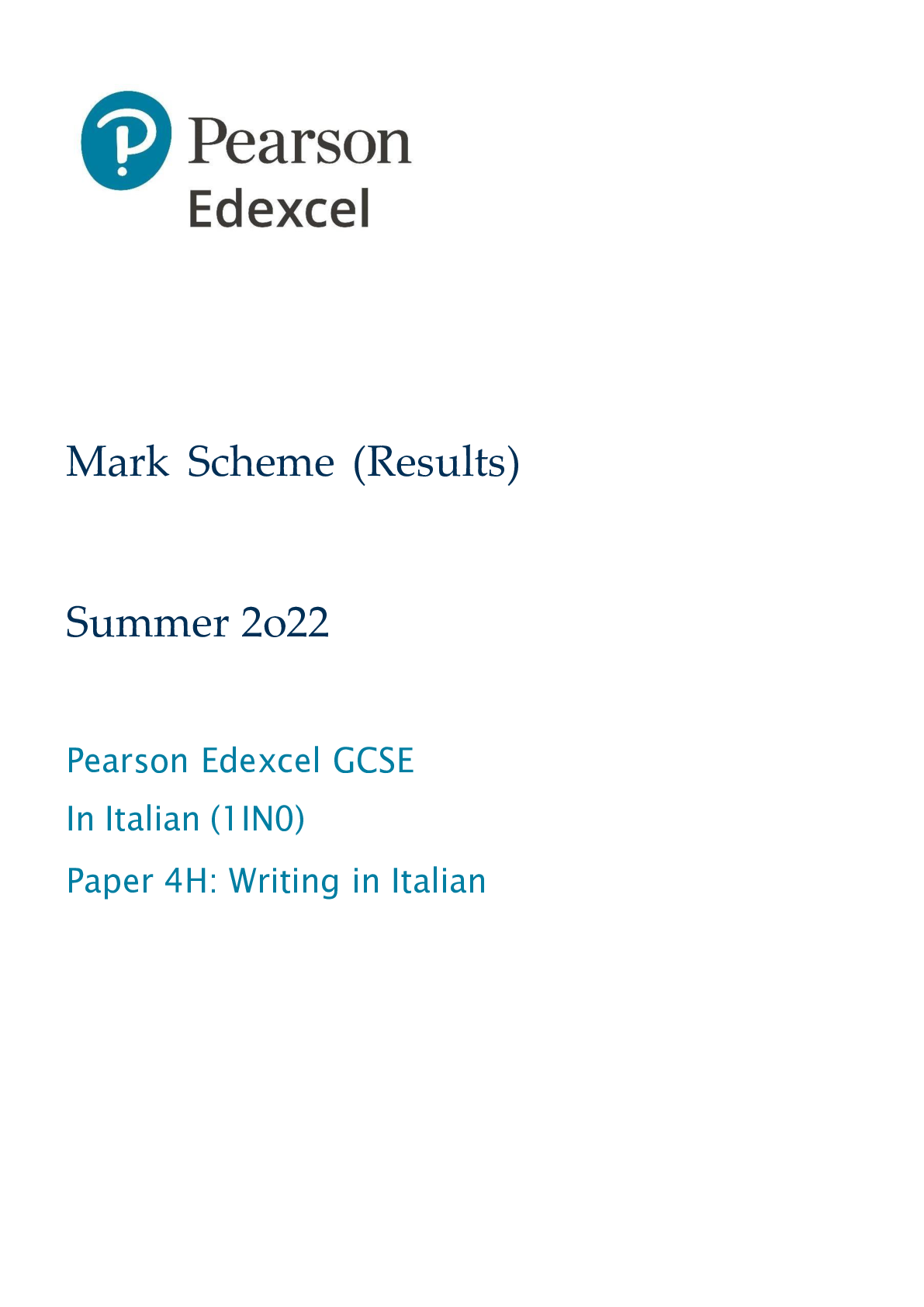
Buy this document to get the full access instantly
Instant Download Access after purchase
Add to cartInstant download
We Accept:

Reviews( 0 )
$7.00
Document information
Connected school, study & course
About the document
Uploaded On
Apr 04, 2023
Number of pages
17
Written in
Additional information
This document has been written for:
Uploaded
Apr 04, 2023
Downloads
0
Views
53

